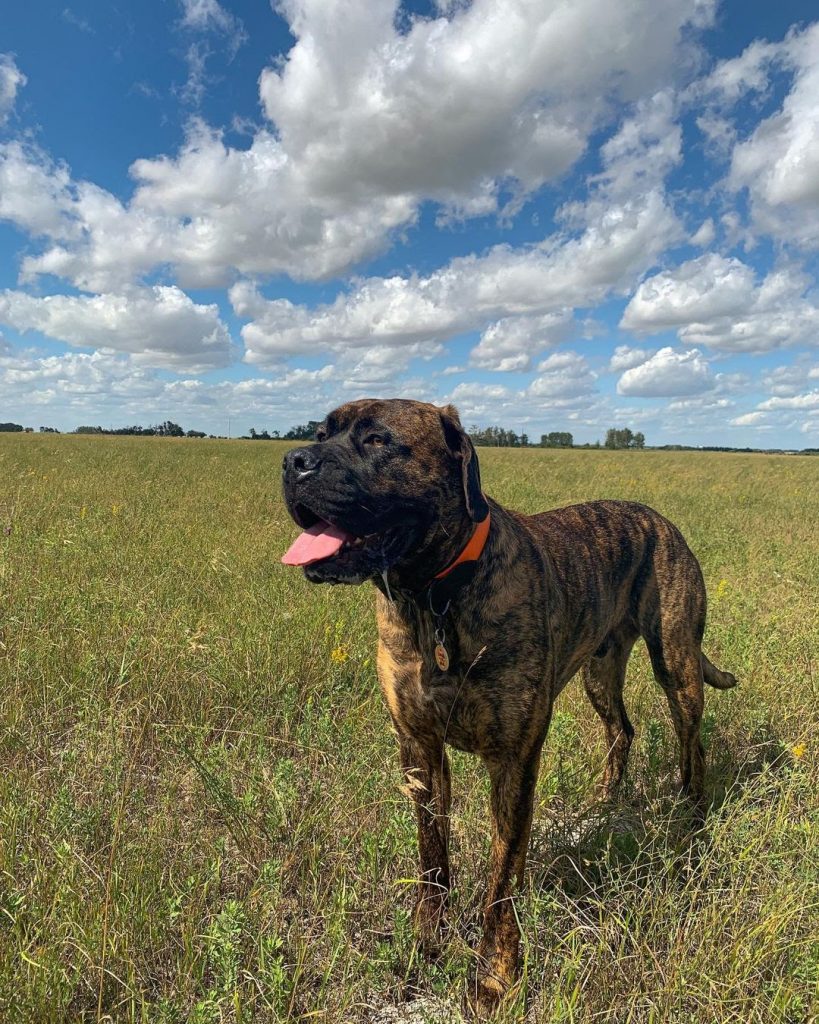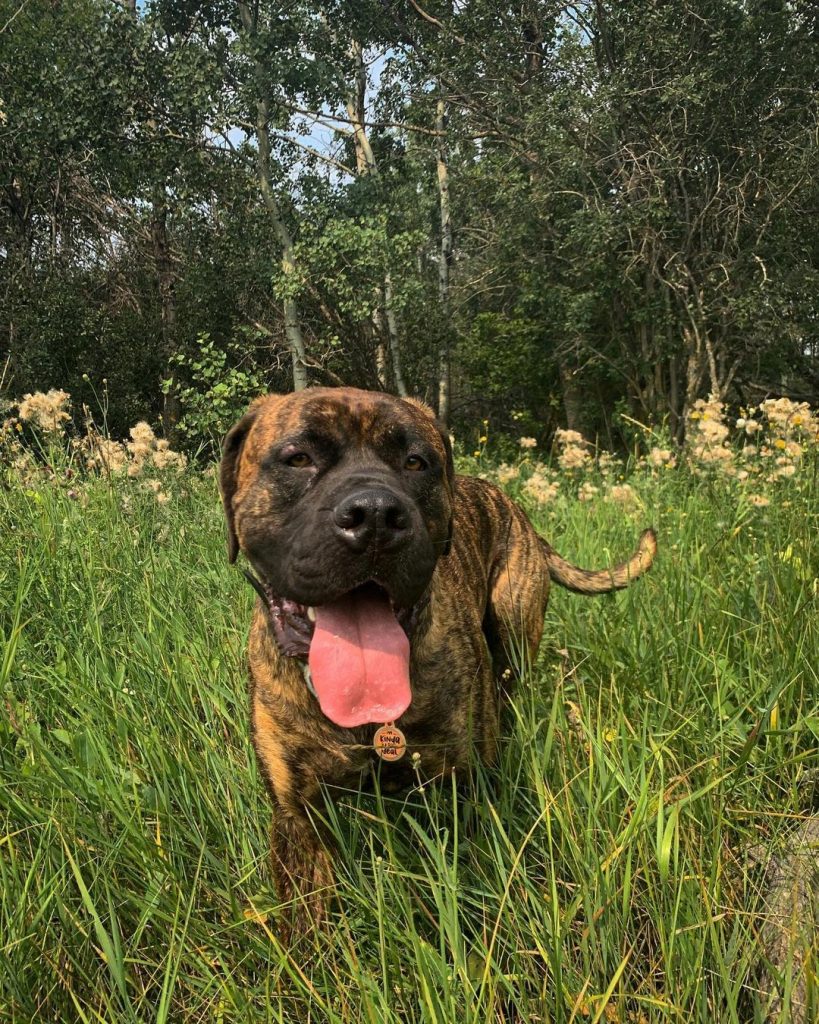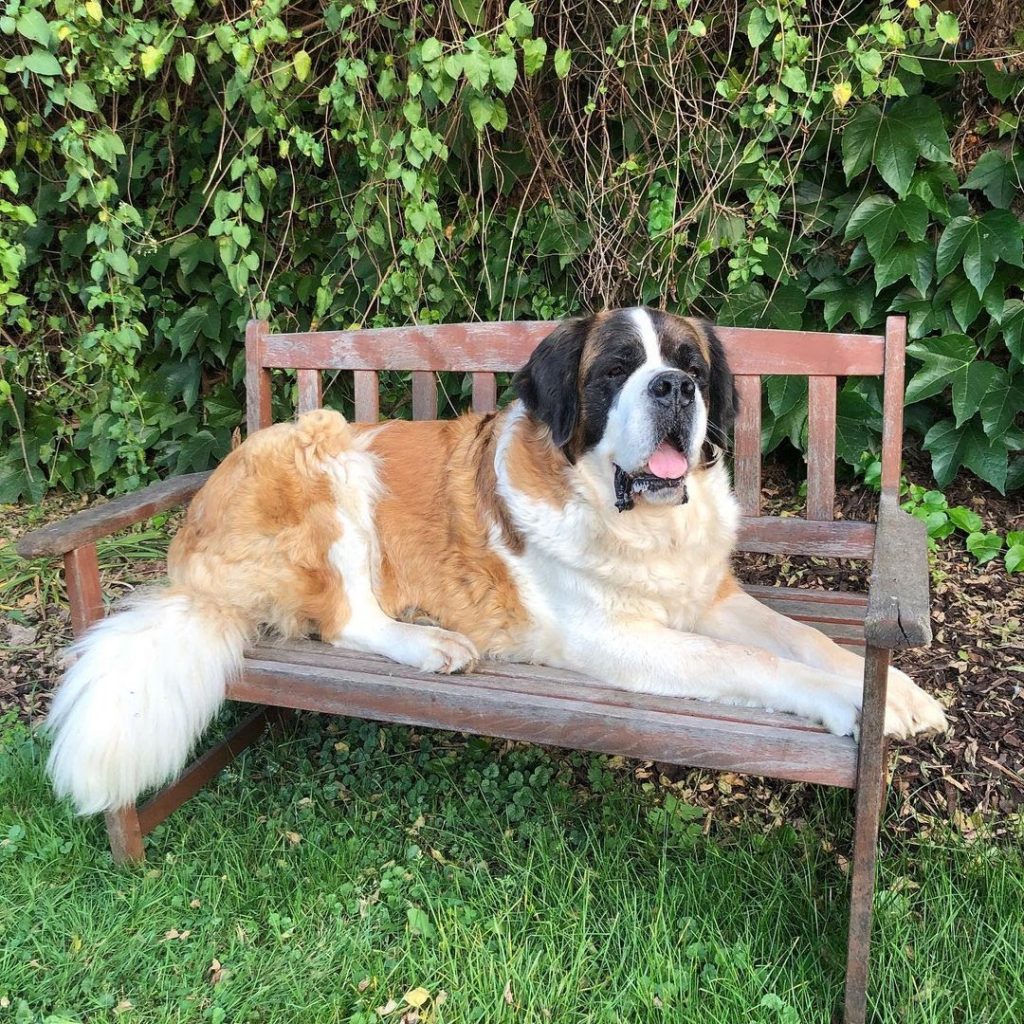English Mastiff vs St. Bernard: How Different Are These Breeds?
The English Mastiff and St. Bernard are two large dogs whose charms made numerous American families realize that having brought either one of them was the best decision they’ve ever made. Despite sharing the same build, each dog brings different skill sets to the table.
The English Mastiff was bred to become a fighter. He is brave, mighty, and warrior-like. His size is a huge advantage in winning battles and in causing great havoc against the opponents. Meanwhile, St. Bernard is known for his incredible humanitarian work in critical conditions which we’ll unravel later on.
Both dogs have had uneasy histories yet they have amazingly learned how to not just mutually cohabitate with humans, but as well as serve as companions with unconditional love and loyalty.
Table of Contents
Breed Origins
English Mastiff


One of the popularly used dogs in ancient battles were the English Mastiffs whose ancestor, the Molossian hound, served the same purpose. Developed in England, these dogs are genetically gifted with a strong and massive build suitable for defeating enemies without breaking too much sweat.
Julius Caesar and Kublai Khan are two of the remarkable men who have luckily witnessed the strong abilities of the English Mastiff. Kublai Khan kept 5,000 English Mastiffs ready at his disposal in case another war breaks out. Meanwhile, Julius Caesar brought back home several dogs of this kind mainly for entertainment in their arenas.
The constant participation of the English Mastiff in dog fights didn’t threaten the canine’s existence. Instead, it was the two world wars that almost drove the breed to extinction. Many families could no longer feed their large dogs, let alone themselves and this went on for several years.
Thankfully, two English Mastiffs from Canada repopulated and they are slowly fading off from the extinct dogs’ list.
St. Bernard


The history of St. Bernard began in the 11th century in the Western Alps of Switzerland. At an altitude of around 2, 469 meters stands the Great St. Bernard Pass which is a route between Italy and Switzerland. Travelers who needed to cross this path were usually met by dangerous bandits and thieves which prompted Bernard de Menthon, the Archdeacon of Aosta, to take matters into his own hands.
He founded the Great St. Bernard hospice which served as a refuge for travelers. The first dogs this hospice acquired were gifts from farmers. That means the Saint was originally a farm dog that served as a guard and a field helper. In 1830, the monks attempted crossbreeding their dogs with Newfoundlands. The outcome was disastrous as dogs grew up with long hair with matting problems, making them incapable of rescue work.
Since this place was isolated, the monks only had limited dogs to breed. As a result, their dogs gradually developed distinctively and manifested superb tracking skills which involved rescuing travelers who were buried under the snow. Currently, St. Bernard is known as a remarkable and dependable dog in times of crisis. He is more developed both in structure and temperament.
Size, Appearance, & Coloring
English Mastiff


If you haven’t seen an English Mastiff in person yet, if ever you do, you’ll be in for a shock. He was described to be a colossal canine for a reason. This is the only breed considered to grow massively! However, for regulation purposes, the American Kennel Club (AKC) has set an ideal minimum height of 27.5 inches for females and 30 inches for males.
Their weights are no joke either! Mastiffs can outweigh an average person as their masses range from 120 to 230 pounds or more!
In appearance, the English Mastiff is known for its robust physique with straight forelegs and muscular hind legs that are enough to support the entire body. Sometimes, his tail can be docked leaving a few vertebrae. His face is composed of a dark mask and eyes that are set apart, the same shade of ears, and prominently saggy jowls. He will drool throughout the day due to this genetic feature.
Commonly, the English Mastiff can only be seen in apricot, fawn, and brindled coats.
St. Bernard


The size of the Saint is quite close to the English Mastiff. Undeniably, although he’s not as huge as the mentioned Mastiff, the Saint remains to be ginormous. Females are ideally 26 to 28 inches and males should be 28-30 inches. They can instantly reach 120 to 180 pounds after just some time.
At first glance, you’ll instantly see his muzzle feature which is short but wide. His toes are well-arched and his legs are all muscular. When the Saint is relaxed, he usually holds his tail low, but if he’s feeling cheerful, it will uncontrollably wag in delight. His face is mostly black and it’s the same with the ears which are set high on the head with a full drop. There is an idea that Saints used to sport kegs on their necks with alcohol inside as rescue dogs, but as sweet as it sounds, this is a myth.
On a different note, they sport a mix of white with markings of tan, black, red, or brindle.
Temperament
English Mastiff
The battle history of the English mastiff is forever ingrained in his bloodline. He may be quite wild during puppyhood since his background persists to manifest, but he will grow up to be kind, dignified, affectionate, and courageous if he’s raised well.
He is not the boisterous type of dog and he’ll always prefer to be calm and silent around his family. He shows his love in several ways like laying his heavy head on your lap for long periods. Since this is a good-natured dog, his love for kids makes him think that they’re his puppies. He will protect them with all his might if an intruder dares to do them harm.
However, their interaction should be monitored considering his size. Mishaps may happen such as him accidentally sitting on your toddler’s hand. Generally, this dog is not suitable for families who have very young children.
St. Bernard
St. Bernard lives up to his name: he is patient, calm, and even-tempered. These qualities are mainly the reason why he’s a good fit as a rescue dog. He finds aggression as an unnecessary behavior. After all, his size alone can be intimidating enough for strangers.
For families, a St. Bernard could be a great choice. However, just like the English Mastiff, his size can be a problem. Wait for your kids to grow older before taking home a Saint puppy to guarantee that no unfortunate accidents due to his humongous size would happen.
Despite this dog’s excellent manners and behaviors, be prepared with his talkative personality. Of course, not everyone will be vocal, but you might end up owning one. Typically, this dog prefers that if you both bond, all of your attention is focused only on him.
Trainability & Intelligence Level
English Mastiff


There can be a huge gap if the English Mastiff is compared to the trainability level of a Poodle. However, this dog needs to be trained the Mastiff way. He’s smart and capable of learning new things but at the same time, he craves physical and mental stimulation.
English Mastiff owners should use positive reinforcements such as praise and reward in keeping this dog interested as well. Never underestimate his memory too! He tends to never repeat the same skill over and over as he finds it a waste of time and effort.
St. Bernard


St. Bernard puppies need to learn what’s good and what’s not during puppyhood as this is a stage when they’re still manageable. Despite the ideal personality set by the AKC regarding this dog breed, he can still potentially develop annoying habits such as barking and digging up the yards.
With that, obedience training for him should never be compromised. Regardless of his eager-to-please attitude, stubbornness may still show. Generally, Saints love to be guided by their owners, thus, making them think before they act.
Also, expose them early to surroundings only if they have completed their shots. Always give them the chance to socialize the moment the vet gives the go-ahead.
Exercise Needs
English Mastiff
The natural muscular structure of the Mastiff doesn’t mean that he would need rigorous exercise to maintain it. His heaviness is quite a hindrance for him when it comes to jumping around or even running for long periods. His joints are quite delicate compared to the body they support, so keep his exercise gentle. A peaceful walk outside for 20-30 minutes, morning and afternoon, would suffice for this low energy-leveled dog.
St. Bernard
St. Bernard is a huge and strong canine, yet his exercise requirements tend to fall on a moderate level. Giving him time to play in your yard or accompanying him on his walks for an hour each day will keep him happy and healthy.
Frankly, this dog would be grateful if he gets to experience an exercise that could mentally stimulate him. You can conduct games or let him play off-lead in a secure area so he can investigate the place on his own.
Maintenance Level
The coats of both dogs are not that hard to manage. Since the Saints can either be plushy or smooth-coated, the general brushing requirement remains to be thrice per week. The English Mastiff, on the other hand, should be brushed once a week to control shedding.
Baths should be done every 6-8 weeks depending on the lifestyle of your dog. If he gets dirty, it’s time to make your dog jump in the tub. Most importantly, always check their nails, teeth, and ears to perfect their hygiene.
Health Problems
English Mastiff
All dogs have genetically predisposed health risks that may potentially show at one point in their lives. This includes the English Mastiff who may suffer a series of complications which some of it are related to his size:
- Ligament injuries
- Elbow dysplasia
- Genetic kidney defect
- Cancer
St. Bernard
Just like the English Mastiff, the Saint can also suffer from joint and structural issues due to his massive size. This is why it is discouraged to over-exercise puppies who might suffer long-term injuries later on. Other complications include:
- Eye problems
- Hypothyroidism
- Bloat
- Bone cancer
Breed Popularity
Due to the perfect and family-friendly qualities of the English Mastiff and St. Bernard, their fame continues to be consistent. As of now, the Mastiff remains on the 29th spot while the Saint is on the 48th spot as per the breed popularity ranking conducted by the AKC. Both canines are popular choices for families who love larger-sized dogs.
Entertaining Facts
English Mastiff


- This dog appeared in the film “House for Dogs”.
- He is the biggest breed in terms of mass!
- The Mastiff is a direct descendant of the Roman war dogs!
- His puppyhood ends after 24 months!
- Mastiffs are flatulent so leave the room once they pass gas.
St. Bernard


- He excels in sports such as cart-pulling and obedience training.
- He is a notorious drooler!
- The Saint never wore barrels on the neck, but he did carry packs of food with him.
- His coat is water-resistant!
- It takes them three years before they stop growing.
Which Dog Is Right for You?
As you can see, there are lots of differences and a balance of similarities in both breeds. To conclude, evaluate your lifestyle and taste in dogs so you’d come down to the perfect match. Which dog are you capable of maintaining? Which one resonates with your personality the most? These are just some of the essential questions that only you can answer. Nevertheless, both large canines are exceptional as long as they grow up with the right owner.
